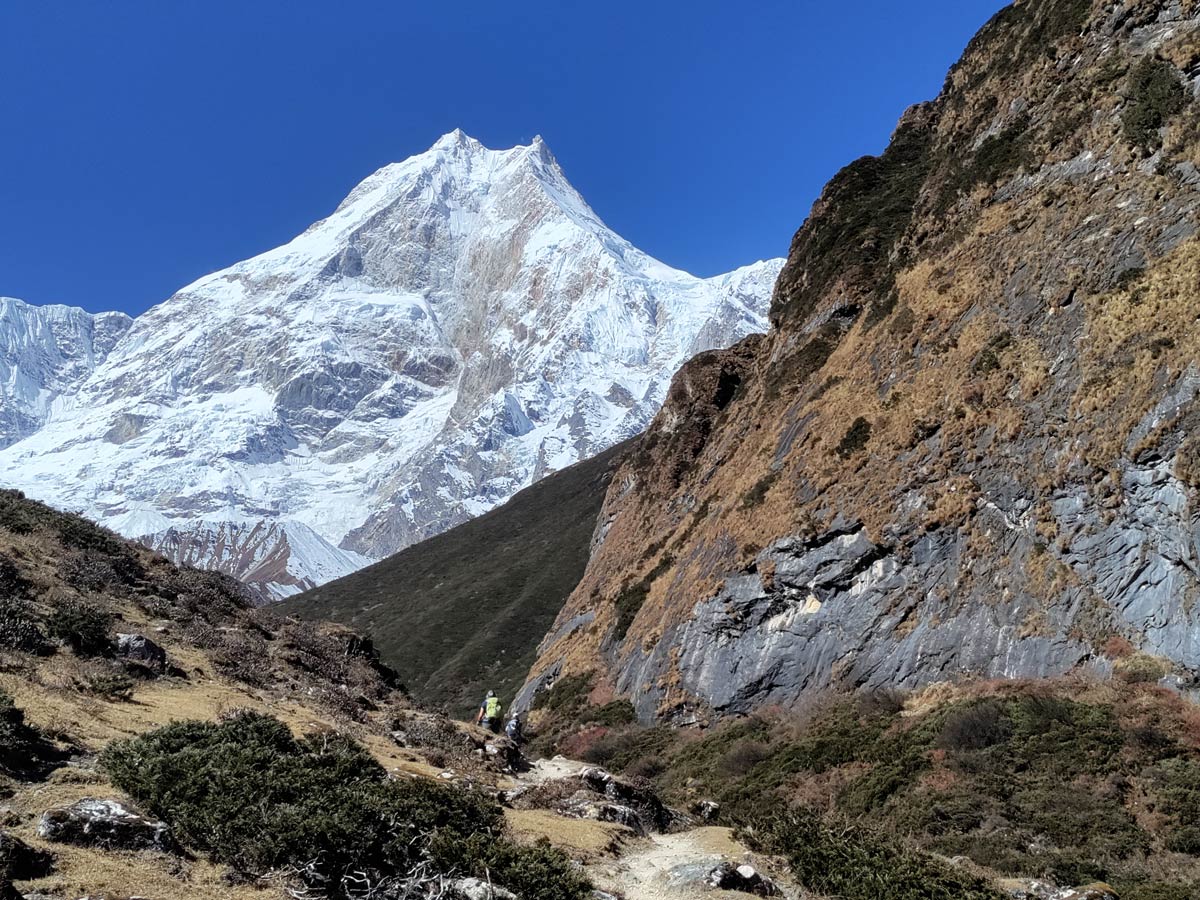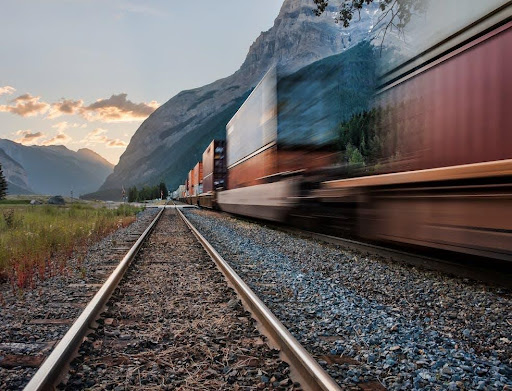Best Time to Do the Manaslu Trek
Whether you climb the Annapurna Circuit, the Everest Base Camp, or the Manaslu Circuit Trek, the timing has a significant impact on your entire trekking experience. The first thing you need do if you decide to hike the Manaslu in Nepal is determine which trekking season will work best for you. This takes into account a number of variables, such as the type of weather, vegetation, crowds, and vistas you anticipate. And select the trekking time based on your needs.
Spring (March, April, May), summer/monsoon (June, July, August), autumn (September, October, November), and winter (December, January, February) are the four seasons of Nepal. The Himalayas have a very different environment and weather from the rest of the nation. To make the best choice for yourself, you must therefore have a thorough understanding of it.
The Four Seasons of Nepal
Spring Season (March, April, May)
One of the greatest seasons to hike Mount Manaslu is in the spring. A lengthy winter comes to an end in the spring. As the weather gets warmer, high-altitude lakes like Ponkar and Birendra begin to melt. In the same way, those who had fled to lower-altitude settlements to avoid the bitter cold of winter returned to their homes in the upper Manaslu region, where tea houses were now ready to greet hikers.
The views are more striking than usual during the beginning of spring because there may still be some snow. The lower portion of the area experiences hundreds of thousands of rhododendron and wildflower blossoms as March comes to a conclusion and April begins. With pleasant daytime temperatures and cool mornings and evenings, the weather is superb. Overall, the temperature on the Manaslu path varies from 0°C to 5°C in the upper regions and from 15°C to 20°C in the lower elevations.
Benefits of springtime hiking in the Manaslu area
The greatest season to hike in Manaslu is in the spring. Days spent on the route are pleasant and scenic thanks to the clear skies and mild temperatures.
Your hike takes on a dreamlike and mystical quality thanks to the blossoming rhododendrons.
You’ll have great visibility of the breathtaking mountain landscapes, including the mighty Manaslu itself, during the clear sky of spring.
The lovely weather of spring makes for a more enjoyable excursion because there are less weather-related impediments to get in the way of you.
Drawbacks of autumn trekking in the Manaslu region
In Manaslu, spring is a well-liked trekking season due to its pleasant weather. This may result in an increase in the number of hikers on the trail, more crowded teahouses, and a higher need for lodging.
Demand drives up the cost of both lodging and meals at teahouses.
Summer/Monsoon (June, July, August)
In Nepal, the summer and monsoon seasons coincide. This time of year brings a hot and muggy climate. Due to bad weather, the majority of hiking routes are closed, including the Short Manaslu Circuit Trek and Tsum Valley. The summer/monsoon season is considered the off-season for the Manaslu trip in the hiking community.
The difficult weather and climate of this season increase the already difficult nature of hiking in the Manaslu region. The trail becomes muddy, the rivers swell due to the continuous heavy rainfall, and the likelihood of landslides increases. Similarly, there are a lot of insects, mosquitoes, and leeches on the trail. Not to add, there’s not much visibility.
Rainfall amounts range from 30 mm above 4,000 meters to an average of 460 mm up to 1,400 meters. There are practically no crowds and lodging costs are among the benefits of trekking during the summer or monsoon season. The average temperature is in the neighborhood of 25°C. The range of daytime temperatures is 20°C to 10°C. It’s cold at night and in the morning.
Manaslu trekking challenges during the summer and monsoon
The constant rain makes the trails muddy and treacherous. It makes the hike harder and raises the possibility of landslides.
The Manaslu trek’s most spectacular mountain vistas are often obscured by persistent rain. It can be difficult to see the Himalayas’ majesty since fog and mist frequently envelop the higher elevations.
In Manaslu, the summer/monsoon season coincides with leech season, making trekking extremely difficult.
Due to a decrease in tourists during the monsoon season, some tea houses along the trekking route may close, which would reduce the number of places to stay.
Other things to do in Nepal throughout the summer and monsoon season
Hike up to the Upper Mustang or Upper Dolpo. There won’t be any rain after you reach the top portion of the route because these two are rain shadow places. The trail greets hikers with open arms and offers scenery that is unmatched in the Himalayas.
Take tours of the city. Outfitter Himalaya offers a variety of tour packages in Nepal that are ideal for this time of year.
Explore national parks. View our tour packages for Bardia National Park and Chitwan National Park.
Autumn (September, October, November)
For weather, climate, and scenery, autumn is the ideal season to hike Manaslu. Trekking To Manaslu Circuit in the autumn is excellent because of the clear mountain views, temperate climate, and consistent weather. Trekkers from all over the world throng the trails, making for amazing nights in the tea houses.
Along the journey, you will see a lot of other hikers, but you will also have enough of opportunity to take in the peace and quiet of the area. Lower elevations see temperatures between 15°C and 20°C, while the upper path is colder with clear, crisp air. It is a clear and bright daytime. The highest portion of the path has temperature fluctuations between 5°C and 7°C, which progressively decrease as winter approaches.
Similarly, fall marks the beginning of Nepal’s festival season. Jatras, Dashain, Tihar, and Chhath are among the major Nepali festivals that are observed by people throughout the nation. It is possible to schedule your Manaslu trip in time to witness and take part in the colorful Nepalese celebrations.
Pros of trekking in the Manaslu region in autumn
Ideal weather for enjoying a high pass crossing hike in the Manaslu region is predicted for the autumn season. A relaxing, safe, and attractive voyage is guaranteed by the bright skies and temperate temperatures.
Trekkers may see the magnificent Manaslu and the surrounding peaks in all their splendor thanks to the outstanding visibility that occurs in the fall.
The foliage in autumn creates a charming background for pictures.
In Nepal, a number of cultural events are observed during the fall. It may be possible for visitors to take part in these celebrations and get a taste of the vibrant regional customs.
Drawbacks of autumn trekking in the Manaslu region
The Manaslu trip gets very congested in the fall since so many hikers opt to complete it during that time of year.
This is the season when lodging and food costs are at their peak. Due of the tremendous demand, the majority of tea establishments have reservations.
The autumn is when the restricted permit costs the most.
Winter (December, January, February)
Another off-season for the Manaslu Circuit hike is winter. The Manaslu region is transformed into a snowy paradise during this season. There are lengthy nights and little daylight. Similarly, when you approach the higher portion of the route, the temperature falls to below -8°C. In addition, the weather is rather erratic. Avalanches and snowstorms are likely in the nearby mountains.
Since most residents go to lower elevations for the winter, settlements like Samdo and Dharamshala become deserted and lack tea house facilities. Trekkers can experience pure Himalayan seclusion on this lonely trail. Although winter is not the best season to undertake the Manaslu trip, we can certainly set you up for one if that’s what you’d like to do.
Wintertime presents more of a challenge for the Manaslu journey, and traversing the Larkya La pass may require basic climbing equipment. Similarly, there is snow on the trail. It is possible to complete the Manaslu trip safely during the winter with the right planning and assistance. Ultimately, the walk becomes an unforgettable adventure in the Himalayas due to the stunning winter scenery.
Another off-season for the Manaslu hike is winter. The Manaslu region is transformed into a snowy paradise during this season. There are lengthy nights and little daylight. Similarly, when you approach the higher portion of the route, the temperature falls to below -8°C. In addition, the weather is rather erratic. Avalanches and snowstorms are likely in the nearby mountains.
Since most residents go to lower elevations for the winter, settlements like Samdo and Dharamshala become deserted and lack tea house facilities. Trekkers can experience pure Himalayan seclusion on this lonely trail. Although winter is not the best season to undertake the Manaslu trip, we can certainly set you up for one if that’s what you’d like to do.
In summary
We have broken down the seasons and how they affect your trekking experience in this blog so you can choose wisely. The season you choose should suit your tastes, goals, and ability to cope with a range of weather conditions.
Stay in touch to get more updates & news on Aoomaal !







